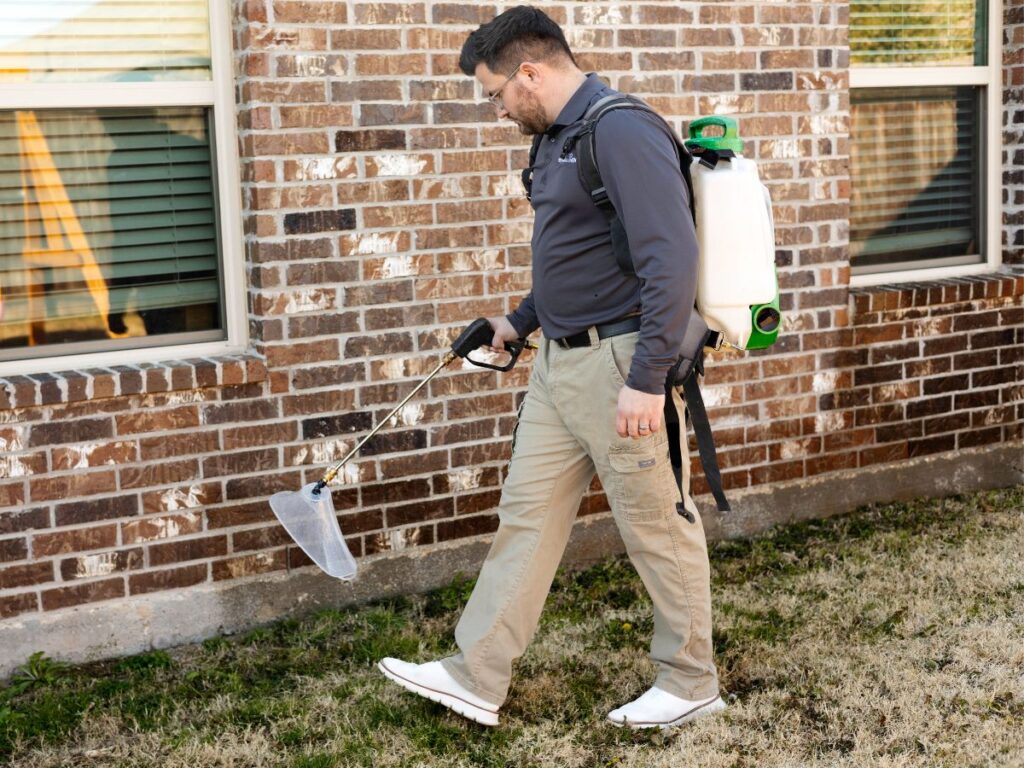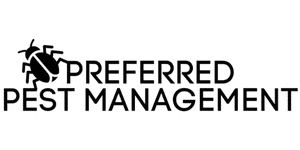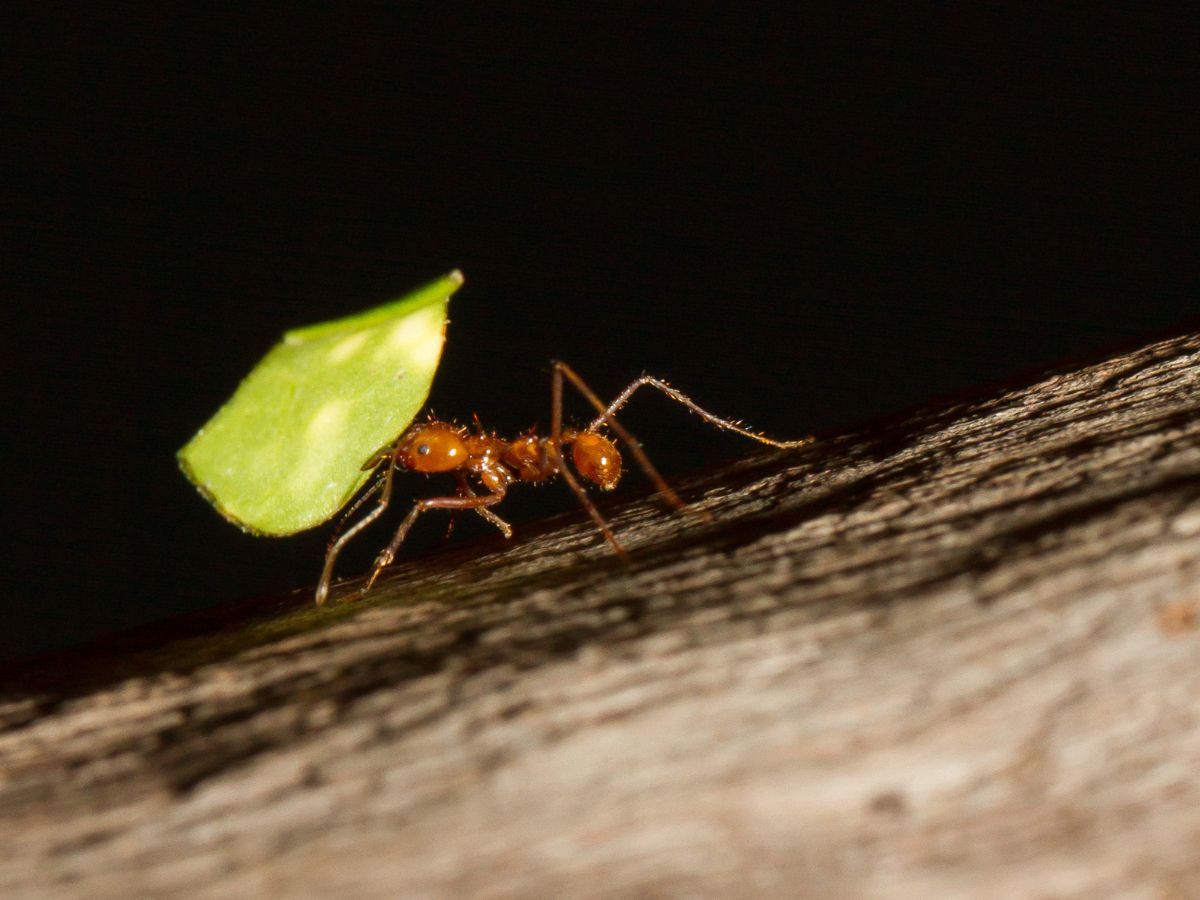Residents of Richardson, TX know that warm weather brings an uptick in insect activity. In 2025 experts are seeing unusual pest patterns across Texas.
Leaf‑cutter ants and Formosan subterranean termites—species normally associated with forests and the Gulf Coast—are moving into suburban yards. According to entomologists, Texas leaf‑cutting ants are some of the most damaging pests found in our state, and they’re becoming a problem in residential landscapes.
Formosan subterranean termites are equally concerning; their massive colonies consume wood quickly and threaten the structural integrity of homes. Understanding why these pests are appearing in Richardson and how to protect your property will help you stay a step ahead.
Why Leaf-Cutter Ants Are on the Rise in Richardson
Warmer winters, heavier spring rains and rapid urban development have created ideal conditions for leaf‑cutter ants. These fungus‑farming insects thrive in well‑drained soils and use cut leaves to cultivate a fungus that feeds their enormous colonies.
They can strip entire shrubs or fruit trees, leaving bare stems. In fact, experts estimate that Texas leaf‑cutting ants kill thousands of acres of pine seedlings each year and cause millions of dollars in damage. As their populations expand northward, Richardson homeowners are noticing defoliated gardens and mysterious mounds. Because colonies can include millions of workers, ignoring leaf‑cutter ants allows the infestation to spread.
What Are Leaf-Cutter Ants?
Leaf-cutter ants are among the most intriguing—and destructive—insects found in Texas. These reddish-brown ants harvest leaves, flowers and other vegetation, carrying the pieces back to underground nests where they cultivate a symbiotic fungus for food. Colonies can number in the millions; some nests extend fifteen feet deep with wide, crescent-shaped mounds that can be mistaken for gopher mounds. Foraging takes place when temperatures drop below 86 °F, so you’ll often see long trails of workers at night or on cloudy days. Each spring after heavy rains, winged males and females take to the air on mating flights to establish new colonies, which is why leaf-cutter ants can spread quickly across neighborhoods. If you notice defoliated shrubs, strange mounds or lines of ants carrying vegetation, you may have a leaf-cutter ant problem that requires professional attention.
Signs of Leaf-Cutter Ant Activity
- Defoliated trees, shrubs or garden plants where leaves have been cleanly cut and removed overnight.
- Crescent-shaped soil mounds or dome-shaped nests with multiple openings, often mistaken for gopher mounds.
- Long trails of ants carrying leaf pieces after dusk or on cloudy days when temperatures drop below 86 °F.
- Winged ants emerging in late spring after heavy rains – these are reproductive alates starting new colonies.
For more insights on troublesome pests in Texas, learn how carpenter ants differ from other ant species and how to tell the difference between termites and silverfish. We also explain why do‑it‑yourself termite treatments often backfire and why professional help is crucial.
Preventing and Managing Leaf-Cutter Ants
Keeping your yard free of decaying vegetation and pruning shrubs regularly will reduce the food supply leaf‑cutter ants need to thrive. Rake up fallen leaves, especially near gardens and trees, and avoid stacking firewood or brush directly against the house. Where possible, water lawns in the morning so soil dries out by afternoon; leaf‑cutter ants prefer consistently moist soil. If you find mounds, do not disturb them; instead, mark their location for a pest professional. Our ant control specialists use targeted baits and non‑repellent treatments that eliminate colonies at the source and prevent satellites from forming. If you suspect leaf‑cutter ants on your property,
Why Formosan Termites Are a Threat in Richardson
Formosan subterranean termites are one of the most destructive wood‑eating pests because their colonies can exceed a million individuals. In Richardson’s warm, humid climate, these invasive termites can thrive and outcompete native species. They consume wooden structures from the inside out and often remain hidden until major damage has occurred. A single Formosan colony can forage over a large area and damage fences, decks and even structural supports much faster than native termites. If you’re unsure whether you’re dealing with termites or another pest like silverfish, read our guide on silverfish vs termites to learn how to tell the difference.
Identifying Formosan Termite Swarms
- Winged swarmer termites (alates) appearing around lights at night in May through June.
- Discarded wings on windowsills or near doors after a swarm event.
- Mud tubes or shelter tubes along foundation walls, piers or utility lines.
- Honeycomb-like carton nests inside walls or trees.
Preventing & Treating Formosan Termite Infestations
- Reduce moisture around your home by fixing leaks, improving drainage and keeping gutters clean.
- Ensure at least 6 inches of clearance between soil and any wood components of your home; avoid piling mulch against the foundation.
- Schedule regular termite inspections and, if needed, have a professional install bait stations or apply liquid termiticide around the perimeter.
- Avoid disturbing termite tubes; call a licensed pest professional for treatment.
Protect Your Richardson Property from Emerging Pests

Curious about the differences between carpenter ants and regular ants? Learn the key differences in our guide on the differences between carpenter ants and regular ants. You can also discover how to tell silverfish and termites apart in our comparison guide, and find out why DIY termite treatments aren’t worth the risk in another helpful article.
If you’re looking for professional ant control in Richardson, our team at Preferred Pest Management has you covered.
What do leaf-cutter ants look like and why are they a problem in my garden?
Leaf‑cutter ants are medium‑sized reddish‑brown ants with spiny bodies and powerful jaws. They harvest leaves and flowers to cultivate a fungus in their underground nests, stripping foliage from plants and seedlings. Their large colonies can defoliate shrubs and fruit trees and undermine lawns and landscaping, making them a serious problem in gardens and yards.
How can I tell if I have Formosan termites around my home?
Signs of a Formosan termite infestation include swarming winged termites at night in May and June, discarded wings on windowsills and porches, mud shelter tubes along your foundation, and honeycomb-like carton nests hidden inside walls or trees. If you notice these indicators or hear hollow-sounding wood, call a professional promptly.
How can I prevent leaf-cutter ant and termite infestations?
To discourage both leaf-cutter ants and termites, keep your yard tidy by removing dead leaves, fallen branches, and mulch that can attract ants. Trim shrubs and trees away from your home, store firewood and building materials off the ground, and fix leaky faucets or gutters to reduce moisture. Seal cracks around doors and foundations, maintain at least six inches of clearance between soil and wood, and schedule regular inspections and professional treatments to catch infestations early.
Read our guide on carpenter ants versus regular ants to learn how to tell them apart
Discover how to tell silverfish and termites apart in our helpful comparison guide.
Find out why DIY termite treatments aren’t worth the risk and why professional help is the smarter choice.


